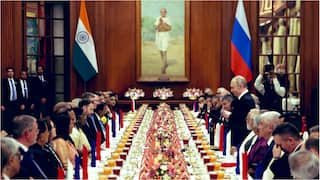Explorer
EXPLAINED| What Is Herd Immunity & How Far Are We To Achieve It To Halt The Covid-19 Pandemic?
According to WHO Scientist Dr. Soumya Swaminathan, for the concept of herd immunity, we need 50 to 60 percent of the population to have immunity to being actually able to break those chains of transmission.

(Photo by Punit PARANJPE / AFP)
New Delhi: The WHO’s chief scientist Dr. Soumya Swaminathan on Friday said “herd immunity” is still a long way ahead for Covid-19 since 50 to 60 percent of the population will need to be immune to the novel coronavirus to protect the uninfected.
ALSO READ|Herd Immunity To COVID-19 Still A Long Way Off, Can Be Sped Up By Vaccine:WHO Chief Scientist Soumya Swaminathan
The results and analysis of the serological survey conducted in Delhi revealed that more than 23 percent of the national capital's population has developed IgG (Immunoglobulin G) antibodies, indicating they had been exposed to the novel Coronavirus.
The results of that survey are being interpreted to suggest that about 46 lakh people in Delhi could so far have been infected with the novel coronavirus, and that “herd immunity” could be approaching. Even Chief Minister Arvind Kejriwal made the suggestion on Friday.
What is Herd Immunity?
When most of a population is immune to an infectious disease, this provides indirect protection—or herd immunity (also called herd protection)—to those who are not immune to the disease. ALSO READ|Almost Quarter Of Delhi's Population Has Been Exposed To Coronavirus, Finds Sero-Prevalence Study For example, if 80% of a population is immune to a virus, four out of every five people who encounter someone with the disease won’t get sick (and won’t spread the disease any further). In this way, the spread of infectious diseases is kept under control. Depending on how contagious infection is, usually, 70% to 90% of a population needs immunity to achieve herd immunity.How can we achieve herd immunity?
There are two ways to achieve herd immunity for COVID-19 — vaccines and infection.- VACCINE-A vaccine for the virus that causes COVID-19 would be an ideal approach to achieving herd immunity. Vaccines create immunity without causing illness or resulting in complications. Herd immunity makes it possible to protect the population from disease, including those who can't be vaccinated, such as newborns or those who have compromised immune systems.
- Natural infection-Herd immunity can also be reached when a sufficient number of people in the population have recovered from a disease and have developed antibodies against future infection. For example, those who survived the 1918 flu (influenza) pandemic were later immune to infection with the H1N1 flu, a subtype of influenza A. During the 2009-10 flu season, H1N1 caused the respiratory infection in humans that was commonly referred to as swine flu.
Follow Breaking News on ABP Live for more latest stories and trending topics. Watch breaking news and top headlines online on ABP News LIVE TV
Read more

Vinay K Srivastava
Opinion





































